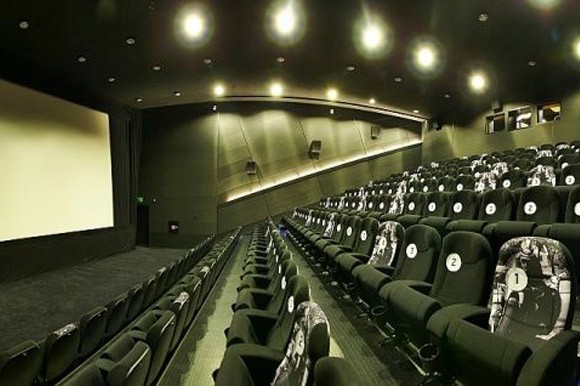 1. What is the biggest challenge of running a cinema such as yours??
1. What is the biggest challenge of running a cinema such as yours??
The biggest challenge is to find audiences for mainly European films. Although this topic is not new and is constantly discussed, it is still true that American content prevails in our cinemas and especially young audiences are mesmerized by the often cheap entertainment these films provide. I don't object to American films altogether, because there are also some very good films, some of which we also screen.
2. What kinds of films do you prefer to screen and why??
We try to keep a sort of balance between art-house films and more entertaining content, mostly of European origin. Children's films have an important role in our repertoire, but the trick is to screen them continuously, so young people and their parents get used to checking our programme again and again. Also local productions are very important as it gives various formats the possibility to be seen from the big screen.
3. The cinema is home to many festivals, events and film weeks. Why are these important and what do they achieve??
The variety of programming is very important to us. Various events let us programme the classics of world cinema that have not been screened and are not even known in Estonia due to the closed society we had for many years. It also gives us an opportunity to present brand new audiovisual material that would never find screening time on a regular basis. Focusing enables us to spread the word to certain interested target groups and such events bring a lot more audiences to individual screenings than films in the regular programming. I must admit, these events are very expensive to organise, so support from various organisations, co-operation with cultural institutes and festivals organised by other institutions are very welcome.
4. What is role of Europa Cinemas for cinemas such as your cinema and why is it important??
The support from Europa Cinemas has helped to run other small art-house cinemas in Estonia since the end of the 1990s. When we created our first art-house cinema in Tallinn in 2004, the guidelines of Europa Cinemas became an important skeleton on which we built up our own ideas about the kind of cinema we wanted to operate. After our first year, Europa Cinemas awarded us with their annual prize for best young audience activities. We have continued the programming in Europa Cinemas traditions in our new cinema Kino Artis that opened last year. The know-how, possibilities to check your actions with other member cinemas and the idea of bringing your local business to the European level, the feeling that small matters - these are as important as the annual support we have received from Europa Cinemas.
5. How does a cinema like yours serve the local community??
As we are centrally located, our community includes people from all over Tallinn. Kino Artis is more like a flagship of sophisticated programming that spreads the message all around the country. But we have our small scale local activities such a cinema club for youth where they learn how to programme a film event, cinema for seniors, baby cinema, etc.
6. How does the cinema fulfill its role of cultural diversity - maybe you can give some examples such as programming of European films, films from countries outside MEDIA such as Asia, Latin American and in the Mediterranean region??
European films are our daily bread; other regions are discovered mostly through film events. Our local distributors are not offering us many films from outside the MEDIA region. Occasionally we have had the courage to programme films from Kazakhstan or Korea, but the key is to find the balance between various cultures and event formats, and to find audiences for every single film.
7. Can you say something about your work with YOUNG Audiences??
We have continuous special programming for young audiences. One of our most popular film series is "Literary Classics in the Cinema" where we screen film adaptations of classic novels, often with introductions by film or literature experts. Presently the ongoing 7th season is more popular than ever demanding us to hold extra screenings to accommodate all interested school groups; we have even spread it to another town. Another film series we are very proud of is targeted at toddlers - every weekend we screen short animation films on selected topics. After the screening a well-known animation character in costume joins the children to play games. It's just amazing to see how warmly welcomed these real-life animation heroes are by the children. We intend to present films for children in our cinema continuously, but the translation issue makes it difficult to have new films coming in as often as we wish.
8. What about the upcoming digitalisation of cinemas?? How will it affect your work and your cinema??
The digitalisation has already arrived and I hope that we will not be the last to join in. I have high hopes for digitalisation as it widens the possibilities to screen library films and also mount various subtitles to the content without ruining the print. Digitalisation would remove many difficulties that surround the circulation of old 35 mm film prints.




















